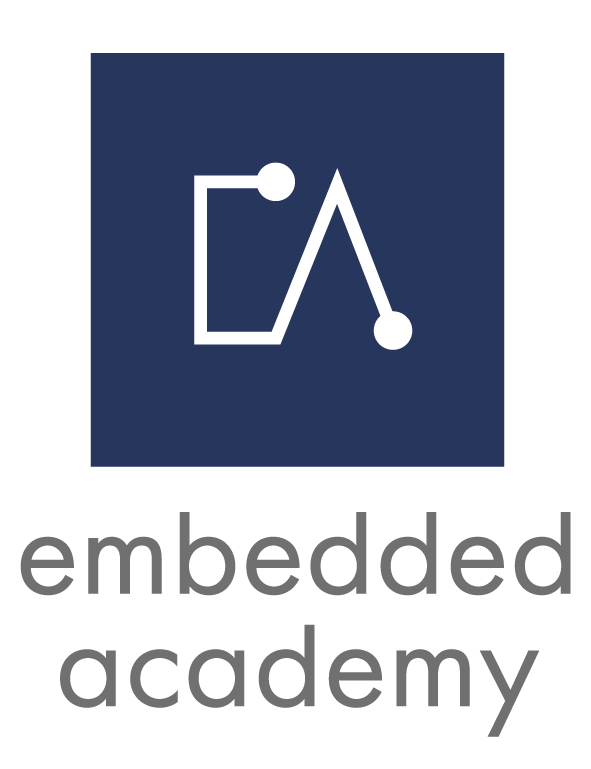E-Learning Course Serial Bus Systems
Content
E-Learning Basic Terms (45 min)
- Motivation (the term bus, typical applications, real time, serial vs. parallel transmission).
- Transmission path (simplex/duplex, bit rate, baud rate, clock signal, communication models, latency, payload and control data)
protocol (structure, principles, protocol stack) - System components (router, gateway, switch and repeater)
E-Learning OSI Model (25 min)
- Motivation, mode of operation and basic model structure
- Transport-oriented layers and their tasks
- Application-oriented layers and their tasks
E-Learning Basic Terms Physical Layer (35 min)
- Different types of transmission media
- Basic structure and examples of connectors
- Binary representation (endianness, bit significance and different codings)
E-Learning Basic Terms Data Link Layer (40 min)
- Communication Process: synchronous and asynchronous serial communication, routing schemes, topologies
- Possibilities for secure data transmission, e.g. parity bit
- Different access control methods
E-Learning CRC Basics (25 min)
- Usage and definition
- Explanation of the generator polynomial
- Calculation of the CRC using two examples
Target
The aim of this course is to introduce learners to all the important basic terms for the topic of serial bus systems.
This course provides basic knowledge for those who are new to the field of bus systems. It is suitable for anyone who wants to become familiar with specific bus systems and wants to acquire the necessary basics for this.
We recommend this course especially for all employees who work in the development of embedded systems, provided that these embedded systems have internal or external serial interfaces.
Trailer
Insights
Course Content
What are serial bus systems?
Serial bus systems are also often referred to as field buses. It is a way of organising the exchange of data between devices or sensors and receivers. In this process communication runs serially over only a few lines. In order to have uniform infrastructures for data transmission, various communication standards have been developed. Well-known examples are Ethernet, CAN (Controller Area Network), MOST (Media Oriented Systems Transport), FlexRay, SENT (Single Edge Nibble Transmission) or Bluetooth.
Why do we need serial bus systems?
Serial bus systems are used in a wide variety of sectors for data communication, not least in automotive engineering. But they are also used for communication between various technical devices on the insides of airplanes or for communication in medical devices for example. Because the complexity and functionality of technology, machines and devices are increasing over time, serial bus systems are becoming more and more important.
How are serial bus systems related to embedded systems?
Embedded systems are specific electronics including software. They are used to control devices and work hidden from the users. If embedded systems need to be networked, this is usually done using bus systems.
Embedded systems interact with their environment. Serial buses are needed, for example, for data transmission from sensors to control units or other embedded systems. The actuators that are controlled by embedded systems are also often connected via serial bus systems. In addition, embedded systems are interconnected via serial bus systems, as it is the case with the board network in cars, or they are connected to PCs via buses.
What can you learn about serial bus systems in this Embedded Academy E-learning?
This course is designed to introduce you to important basic terms related to serial bus systems. Terms concerning hardware and software are explained.
The focus of the first E-learning lies on very general basic terms that are relevant to most bus systems. For example, the terms bit rate, baud rate, latency, clock signal and router are explained, or what a protocol and a protocol stack actually are. At the beginning of the E-Learning, typical application areas of serial bus systems and their advantages over other systems are described.
The second E-Learning deals with the OSI model, which is a reference model for communication systems and protocols. Two components of this model are particularly relevant for bus systems: the so-called physical layer and the data link layer.
The next two E-Learning courses are based on these mentioned layers. One of them covers basic terms of the physical layer, the other one those of the data link layer.
The last e-learning serves as a supplement. It explains the basic principle of how the CRC (Cyclic Redundancy Check) is calculated.
You must log in and have started this course to submit a review.
